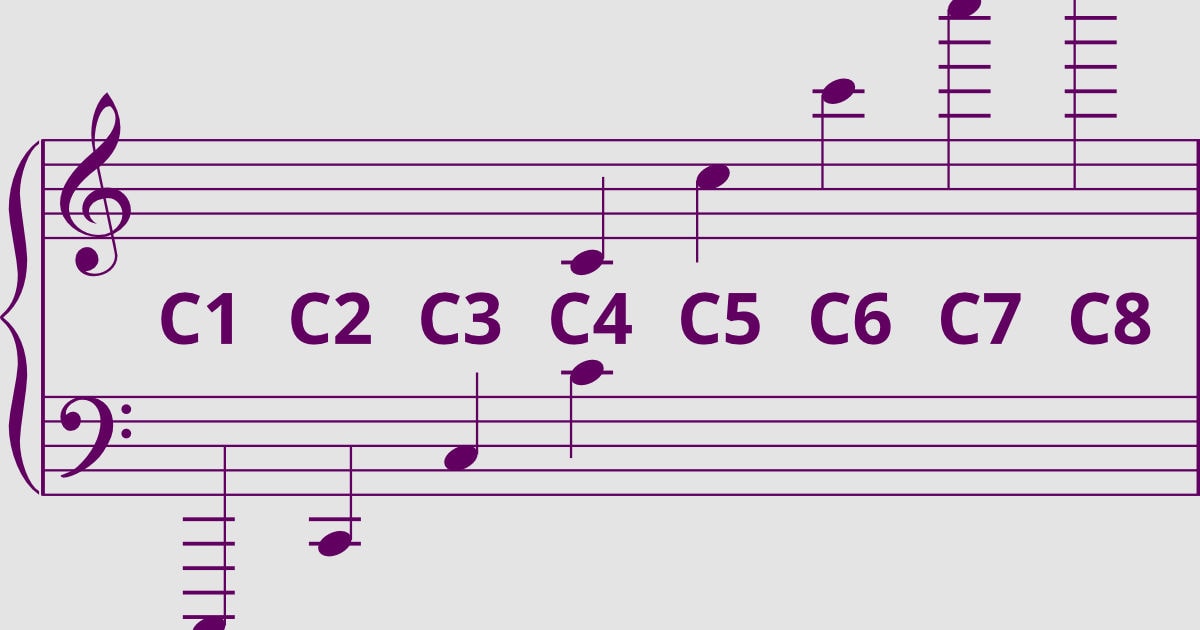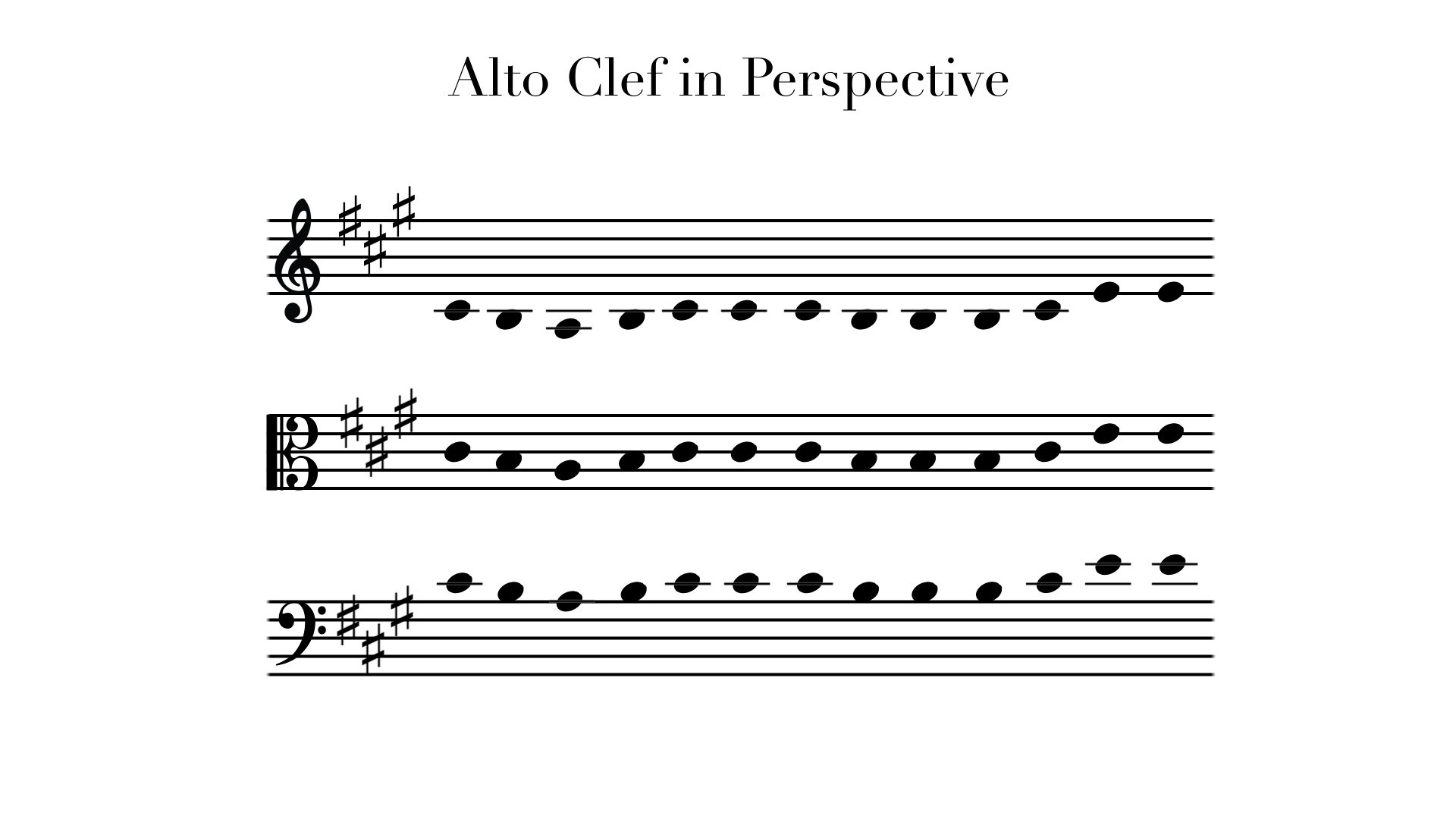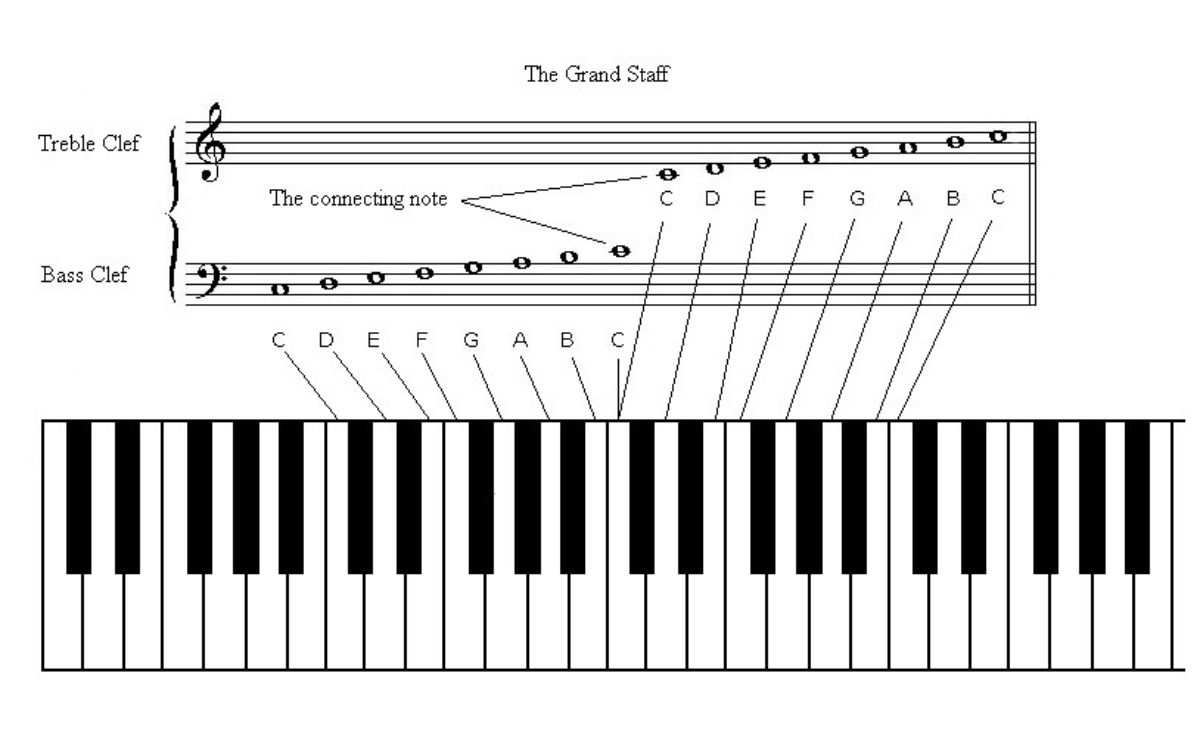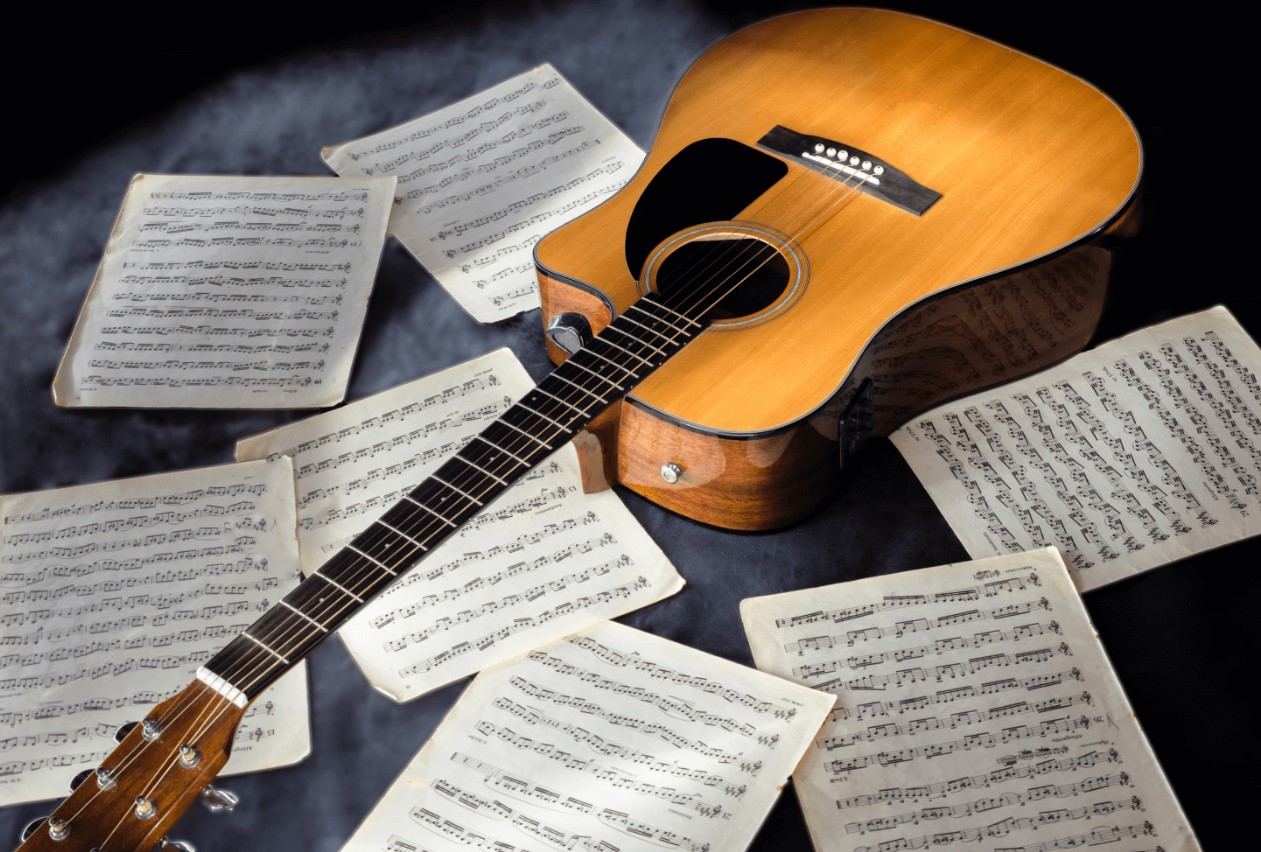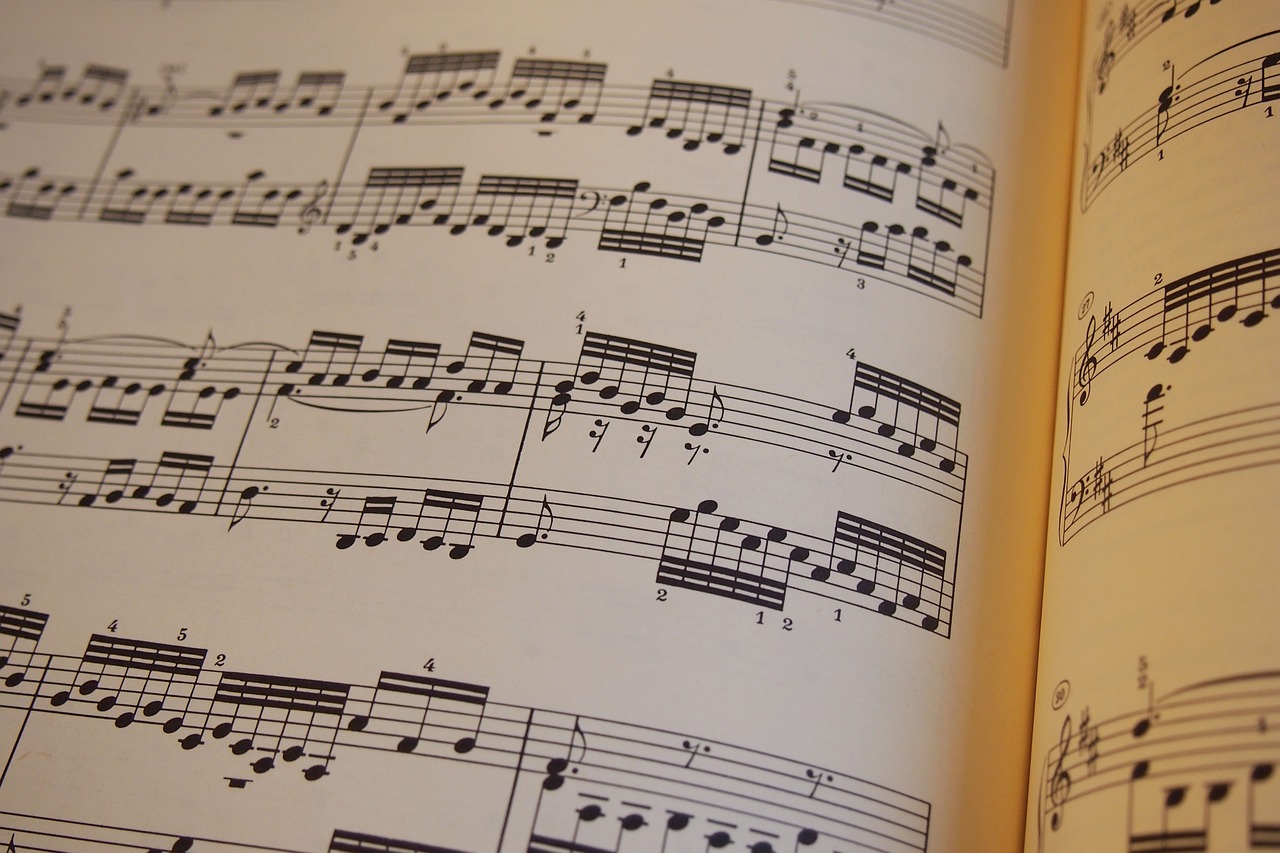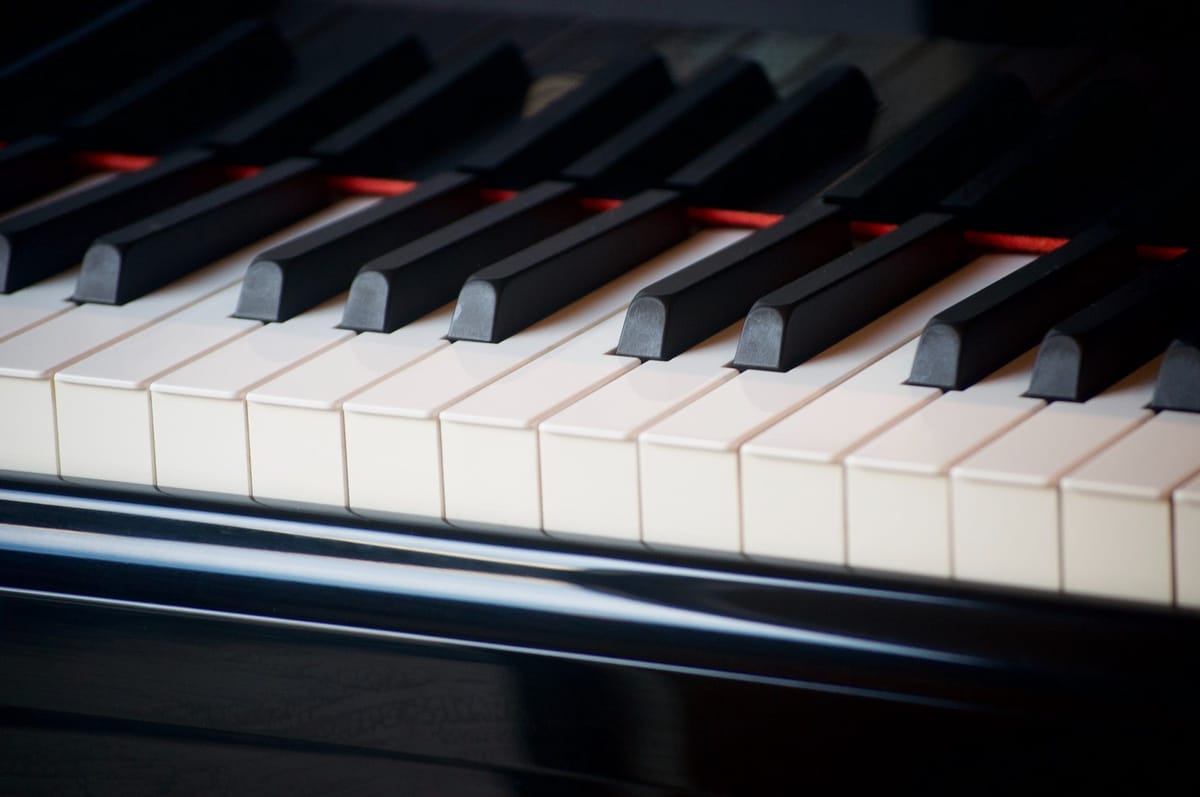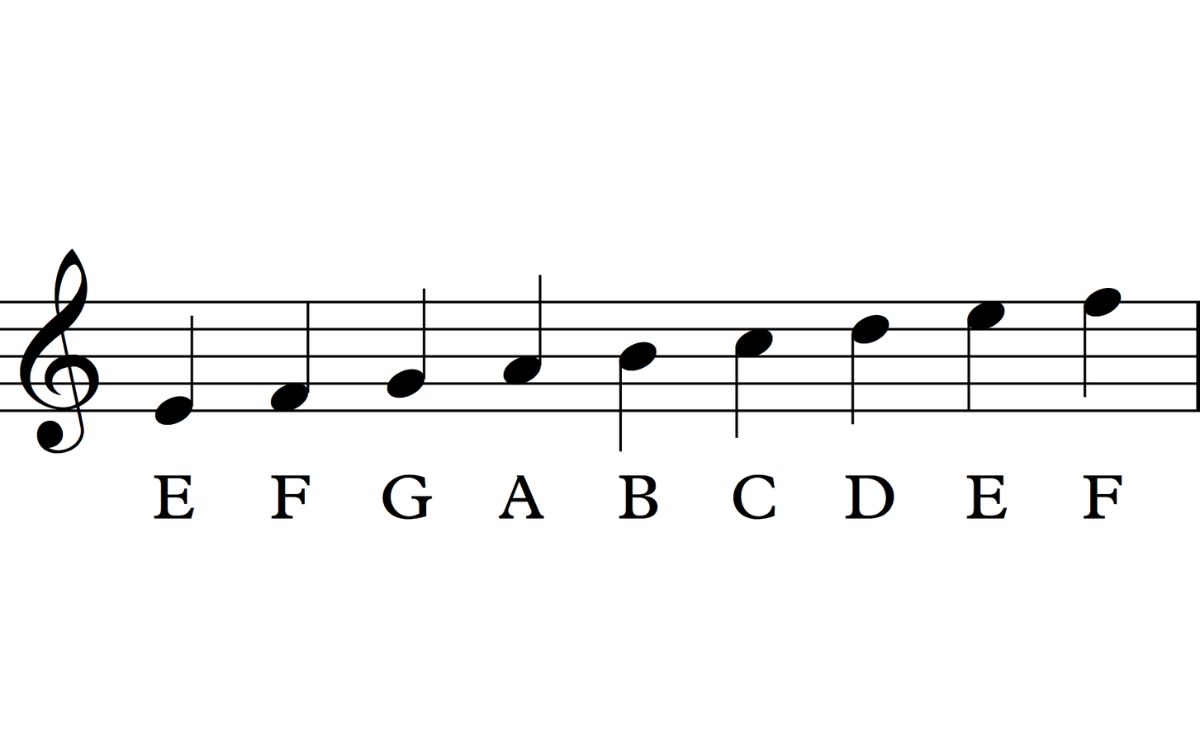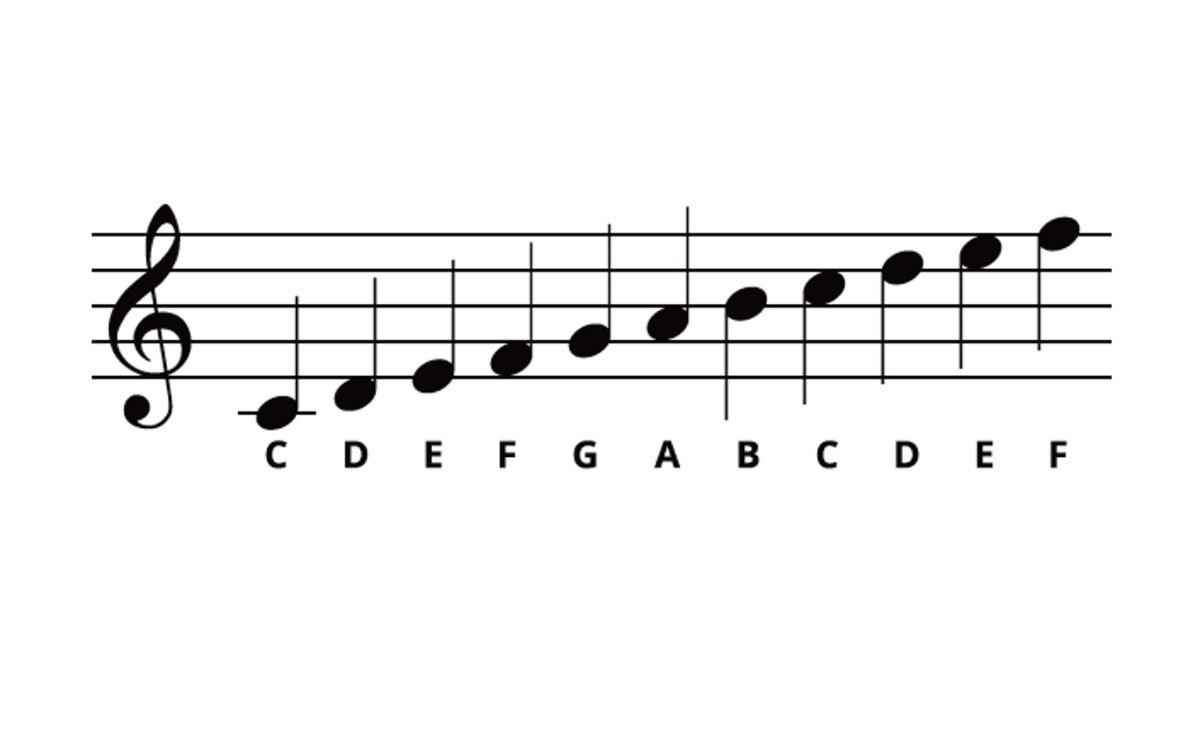Home>Production & Technology>Treble>How To Read Treble Clef Sheet Music


Treble
How To Read Treble Clef Sheet Music
Modified: January 22, 2024
Learn how to read treble clef sheet music and master the art of playing music. Enhance your musical skills with easy-to-follow, step-by-step guides and tips.
(Many of the links in this article redirect to a specific reviewed product. Your purchase of these products through affiliate links helps to generate commission for AudioLover.com, at no extra cost. Learn more)
Table of Contents
- Introduction
- Understanding the Treble Clef
- Identifying the Treble Clef Notes
- Memorizing the Letter Names of Treble Clef Notes
- Reading Basic Melodies in Treble Clef
- Recognizing Key Signatures in Treble Clef
- Understanding Note Durations in Treble Clef
- Reading and Interpreting Musical Symbols in Treble Clef
- Tips and Tricks for Reading Treble Clef Sheet Music
- Conclusion
Introduction
Welcome to the wonderful world of reading treble clef sheet music! Whether you’re a seasoned musician or just starting your musical journey, understanding how to read treble clef sheet music is an essential skill. The treble clef, also known as the G clef, is one of the most commonly used clefs in music notation.
The treble clef is marked by its distinctive curly line that wraps around the second line from the bottom of the staff. This line represents the note G, hence the name “G clef.” The treble clef is primarily used to notate music for instruments such as the piano, violin, flute, and trumpet, among others.
Reading treble clef sheet music allows you to decipher musical notation, recognize pitches, and understand the rhythm and dynamics of a piece. It opens up a vast array of musical possibilities, enabling you to play melodies, harmonies, and chords.
In this article, we will guide you through the process of reading treble clef sheet music, starting from understanding the basic elements to mastering complex musical symbols. Whether you’re learning an instrument, studying music theory, or just curious about how music is written, this article will provide you with the knowledge and tools to read treble clef sheet music with confidence and ease.
So, grab your instrument or pull up a chair, and let’s dive into the magical world of treble clef sheet music!
Understanding the Treble Clef
The treble clef is a symbol used in sheet music to indicate the pitch of notes on the staff. It consists of a stylized “G” that wraps around the second line from the bottom of the staff. The placement of the treble clef on the staff tells us that the second line from the bottom is the note G, providing a reference point for all the other notes on the staff.
The treble clef is used to notate higher-pitched instruments and voices. Instruments such as the piano, violin, flute, and trumpet typically use the treble clef. In vocal music, the treble clef is used for higher-range female voices, such as soprano and alto.
The lines and spaces of the staff represent different pitches. Starting from the bottom line and moving up, the lines of the treble clef staff represent the notes E, G, B, D, and F. The spaces between the lines represent the notes F, A, C, and E. To remember the note names on the lines, many musicians use the mnemonic “Every Good Boy Does Fine,” and for the spaces, “FACE.”
It’s important to note that the treble clef does not dictate the specific pitch that each line or space represents. The pitch actually depends on the clef and key signature used in the music. The treble clef simply provides a reference point, allowing us to determine the relative pitch of the notes.
Understanding the symbols and structure of the treble clef is crucial for reading sheet music accurately. Familiarize yourself with the shape and position of the treble clef on the staff, as it forms the foundation for reading musical notation in the treble clef. With practice, you’ll be able to quickly identify and interpret the notes and rhythms of any piece of music written in treble clef.
Identifying the Treble Clef Notes
Knowing how to identify the notes on the treble clef staff is essential for reading sheet music accurately. Each line and space on the staff corresponds to a specific note, allowing musicians to accurately play or sing the intended pitches.
Let’s start with the lines of the treble clef staff. From bottom to top, the lines represent the notes E, G, B, D, and F. To help remember these notes, you can use the mnemonic device “Every Good Boy Does Fine.” Each letter of the mnemonic corresponds to a note on a line of the staff.
Now, let’s move on to the spaces between the lines. From bottom to top, the spaces represent the notes F, A, C, and E. A popular mnemonic for remembering these notes is “FACE,” where each letter corresponds to a note in a space on the staff.
Remember that the notes on the lines and spaces of the treble clef staff can change depending on the key signature and other musical notations in the sheet music. However, the basic notes mentioned above serve as a starting point for understanding and identifying the treble clef notes.
When reading sheet music, it’s important to pay attention to the position of the notes on the staff, as well as any additional markings such as sharps (♯) or flats (♭). These symbols affect the pitch of the corresponding note. A sharp raises the pitch by one half step, while a flat lowers the pitch by one half step.
Practice identifying the notes on the treble clef staff by using flashcards, online quizzes, or playing familiar tunes on your instrument. Repetition and exposure to different musical passages will solidify your note recognition skills and make reading treble clef sheet music second nature.
By mastering the ability to identify the treble clef notes, you’ll be well on your way to becoming a proficient reader of treble clef sheet music.
Memorizing the Letter Names of Treble Clef Notes
Memorizing the letter names of the notes on the treble clef staff is a fundamental step in becoming proficient at reading treble clef sheet music. By committing these letter names to memory, you’ll be able to quickly identify and play the correct pitches when reading musical notation.
To help with memorization, it’s useful to remember the sequence of letters in the musical alphabet. The musical alphabet consists of the letters A to G, which repeat in a continuous cycle. The note after G is A, and the pattern repeats again.
Starting from the bottom line of the treble clef staff, which represents the note E, you can use the acronym “Eddie Ate Dynamite, Good Bye Eddie,” or “Every Acid Dealer Gets Busted Eventually,” to help remember the letter names of the notes on the lines of the staff.
For the spaces between the lines, from bottom to top, the note names are F, A, C, and E. You can use the mnemonic “FACE” to remember these note names.
It’s important to practice and reinforce your knowledge of the letter names of the treble clef notes regularly. You can do this by playing scales, simple melodies, or using flashcards. As you become more familiar with the letter names, you’ll start to recognize patterns and intervals between notes, making reading treble clef sheet music more intuitive.
It’s worth noting that while memorizing the letter names is a valuable step, truly mastering treble clef sheet music involves understanding intervals, key signatures, and other musical elements. Continual practice, playing with others, and exploring a variety of repertoire will help deepen your understanding and proficiency in reading treble clef sheet music.
By dedicating time and effort to memorizing the letter names of treble clef notes, you’ll build a solid foundation for reading and interpreting sheet music, empowering you to bring musical compositions to life.
Reading Basic Melodies in Treble Clef
Now that you have a grasp of the treble clef, its symbols, and the letter names of the notes, you’re ready to start reading and playing basic melodies in treble clef. Basic melodies usually consist of a series of single notes played in sequence. By following the notes on the staff, you’ll be able to recreate the melody on your instrument.
Start by looking at the first note on the staff of the treble clef. Determine its letter name based on its position on the staff (line or space) and any sharps, flats, or key signatures indicated in the sheet music.
Once you’ve identified the first note, move to the next note in the sequence. Pay attention to the direction of the note stems; notes with stems facing upwards are played higher in pitch, while notes with stems facing downwards are played lower in pitch.
As you read the notes, observe any changes in the rhythm indicated by the note duration symbols. Whole notes, half notes, quarter notes, and eighth notes are some common examples of note durations you may encounter. Each note duration has a specific timing value, allowing you to understand how long to hold each note before moving on to the next.
It’s also important to keep an eye out for other musical symbols such as rests, dynamics markings, and articulations. Rests indicate periods of silence in the music, dynamics markings describe the volume and intensity of the notes, and articulations affect the way notes are played, such as staccato or legato.
When reading basic melodies, it can be helpful to tap or count along with the rhythm, ensuring you’re playing the correct timing. Take it slow at first, gradually increasing your speed as you become more comfortable and confident in reading and playing the melody.
Don’t hesitate to refer to sheet music examples, online tutorials, or seek guidance from a music teacher to aid in your understanding of reading basic melodies in treble clef. The more you practice, the more familiar you’ll become with the patterns and structure of music notation.
Remember, reading and playing basic melodies in treble clef is a stepping stone to more complex musical pieces. With dedicated practice and a willingness to learn, you’ll be able to tackle increasingly challenging music and expand your repertoire as a treble clef reader.
Recognizing Key Signatures in Treble Clef
In the world of music, key signatures play a significant role in indicating the tonality of a piece. They provide essential information about the key in which a composition is written and help guide the performer in interpreting the music accurately. Being able to recognize key signatures in treble clef sheet music is a crucial skill for any musician.
A key signature is represented by a series of sharps (#) or flats (♭) placed at the beginning of each line of the staff, in between the treble clef and the time signature. The position of the sharps or flats on the staff indicates the specific notes that are affected by the key signature throughout the piece.
In treble clef, the most common key signatures indicate major keys such as C Major, G Major, D Major, and F Major, among others. Each major key has a unique pattern of sharps or flats in its key signature, which determines the notes that need to be altered in the music.
To recognize key signatures in treble clef, start by identifying the number of sharps or flats present. This will give you a clue about the possible major key it represents. For example, a key signature with one sharp indicates the key of G Major, as the sharp is placed on the line representing the note F.
Memorizing the order of sharps or flats in key signatures can be helpful. The sharps appear in the following order: F♯, C♯, G♯, D♯, A♯, E♯, B♯. The flats appear in the reverse order: B♭, E♭, A♭, D♭, G♭, C♭, F♭. By familiarizing yourself with these patterns, you can quickly identify the specific key signature.
As you become more acquainted with key signatures, you’ll notice that they not only affect the notes in the music but also impact the overall mood and tonality of a composition. Different key signatures evoke different emotions and have distinct musical characteristics.
Recognizing key signatures in treble clef will not only help you understand the tonal center of a piece but also assist in sight-reading, transposing, and improvising music. It allows you to anticipate the notes that may appear and prepares you for any key changes that may occur throughout the music.
Practice identifying key signatures in treble clef by analyzing different pieces of sheet music. Look for the pattern of sharps or flats and use your knowledge of major keys to determine which key signature is being used.
By honing your ability to recognize key signatures in treble clef, you’ll become a more proficient musician, capable of interpreting and performing music in the correct tonality with precision and confidence.
Understanding Note Durations in Treble Clef
When reading treble clef sheet music, it’s essential to understand note durations and their corresponding timing values. Note durations indicate the relative length of each note, helping musicians interpret the rhythm and timing of a piece accurately.
In treble clef, note durations are represented by a combination of the shape of the notehead, the presence or absence of a stem, and additional flags or beams. The most common note durations you’ll encounter include whole notes, half notes, quarter notes, eighth notes, and sixteenth notes.
A whole note is an open circle without a stem and represents a sustained sound that lasts for four beats. It’s the longest duration commonly used in music notation.
A half note is an open circle with a stem and represents a sound that lasts for two beats. It’s half the duration of a whole note.
A quarter note is a solid circle with a stem and represents a sound that lasts for one beat. It’s the most frequently used note duration and serves as a reference point for timing in sheet music.
An eighth note has a solid circle with a stem and a flag attached. It represents a sound that lasts for half a beat, or an eighth of a whole note. When two or more eighth notes are connected, they are joined by beams to simplify notation.
A sixteenth note is a solid circle with a stem and two flags attached. It represents a sound that lasts for a quarter of a beat, or a sixteenth of a whole note. Like eighth notes, multiple sixteenth notes are often connected with beams.
In addition to these basic note durations, you may encounter other symbols such as rests, dots, ties, and various rhythmic notations that further affect the timing and duration of the notes.
Rests indicate periods of silence in the music and have durations corresponding to the note values. For example, a whole rest lasts for four beats, while a quarter rest lasts for one beat of silence.
Dots placed after a note or rest extend its duration by half. For instance, a dotted half note would last for three beats, and a dotted quarter note would last for one and a half beats.
Ties are curved lines connecting two notes of the same pitch. By tying two notes together, their durations are combined into one continuous sound. This is commonly used to extend the duration of a note across multiple measures.
Take the time to familiarize yourself with these note durations and their corresponding timing values. Practice clapping or counting along to different rhythms to internalize the feel and duration of each note.
Understanding note durations in treble clef allows you to accurately interpret the rhythm and timing of a piece of music. It guides you in playing the notes for the appropriate length, enhancing your ability to perform the music with precision and musicality.
Reading and Interpreting Musical Symbols in Treble Clef
In addition to the notes and rhythms, treble clef sheet music contains a variety of symbols that convey valuable information about how a piece should be performed. These musical symbols add depth and expression to the music, allowing musicians to interpret and convey the composer’s intentions.
Here are some common musical symbols you’ll encounter when reading and interpreting treble clef sheet music:
- Accidentals: Sharps (♯), flats (♭), and naturals (♮) are used to alter the pitch of a note. They appear before a note and affect all instances of the same note within the same measure.
- Key Signatures: Key signatures indicate the tonal center of a piece and are placed at the beginning of each line of the staff. They consist of sharps or flats and govern the pitch alterations throughout the music.
- Dynamics: Dynamic markings indicate the volume and intensity at which the music should be performed. Examples include pianissimo (pp), piano (p), mezzo piano (mp), mezzo forte (mf), forte (f), and fortissimo (ff).
- Articulation Marks: Articulation marks affect the way notes are played and shaped. They include staccato (dot above or below a note), legato (curved line connecting notes), accent (>) for emphasis, and more.
- Repeat Signs: Repeat signs indicate sections of music that should be repeated. They consist of double bar lines with either two dots (indicating repeat from beginning) or one dot (indicating repeat from the corresponding end repeat sign).
- Tempo Markings: Tempo markings indicate the speed at which a piece should be played. They can be written in Italian, such as allegro (fast), moderato (moderate), and adagio (slow), or displayed as metronome markings.
- Fermata: A fermata symbol (∞) placed above a note indicates that it should be held longer than its written duration. The length of the pause is typically left to the performer’s discretion.
Remember to consult a music notation guide or look up specific symbols you encounter in order to correctly interpret their meaning. Familiarizing yourself with these symbols will greatly enhance your comprehension and performance of treble clef sheet music.
As you read and interpret treble clef sheet music, pay attention not only to the individual symbols but also to their combination and context. The interplay of these symbols adds nuance and expression to the music, allowing you to convey the composer’s intended musicality.
Listening to different interpretations of the same piece by different musicians can also offer insights into various ways of interpreting and expressing the musical symbols.
Reading and interpreting musical symbols in treble clef is an ongoing process of learning and exploration. The more you engage with different styles of music and expose yourself to various musical symbols, the more adept you’ll become at infusing your performances with depth, emotion, and authenticity.
Tips and Tricks for Reading Treble Clef Sheet Music
Reading treble clef sheet music may seem daunting at first, but with practice and the right approach, it can become second nature. To help you navigate the musical notation with ease, here are some valuable tips and tricks:
- Memorize the note names: Take time to memorize the letter names of the notes on the lines and spaces of the treble clef staff. Use mnemonic devices like “Every Good Boy Does Fine” for the lines and “FACE” for the spaces to aid memorization.
- Practice sight-reading: Regularly challenge yourself with sight-reading exercises. Start with simple melodies and gradually progress to more complex pieces. This will improve your note recognition and timing.
- Break it down: When faced with a challenging section, break it down into smaller segments and practice them individually. This allows you to focus on specific note patterns and rhythms, gradually putting them together.
- Use fingerings and position markers: For instrumentalists, fingerings and position markers are helpful guides. Taking note of proper finger placements on the instrument or using position markers can aid in reading and playing the correct notes.
- Listen to recordings: Listen to recordings of the music you’re learning to develop an ear for the correct pitches and interpretation. Hearing the melody can reinforce your understanding of the sheet music.
- Mark important sections: Use a pencil to mark key sections, difficult passages, or reminders in your sheet music. This will serve as a visual cue and help you focus on crucial parts during practice.
- Practice with a metronome: Use a metronome to develop a sense of timing and rhythm. Start at a slower tempo and gradually increase the speed as you become more comfortable with the piece.
- Focus on rhythm: Pay attention to the relative durations of the notes. Tap or count along to establish a solid sense of rhythm while reading the music.
- Study music theory: Gain a basic understanding of music theory concepts, such as key signatures, scales, and intervals. This knowledge will provide valuable insights into the structure and patterns within the music.
- Take breaks: If you find yourself getting frustrated or overwhelmed, take short breaks during practice sessions. Giving your mind a rest can help maintain focus and prevent mental fatigue.
Remember, consistency and patience are key when learning to read treble clef sheet music. Dedicate regular practice time, stay positive, and celebrate small victories along the way. Over time, your skills will improve, and you’ll gain confidence in your ability to read and interpret treble clef sheet music.
Conclusion
Congratulations! You have reached the end of this guide on reading treble clef sheet music. By understanding the treble clef, identifying notes, recognizing key signatures, and interpreting musical symbols, you have equipped yourself with the essential skills needed to embark on your musical journey.
Remember, becoming proficient at reading treble clef sheet music takes time, practice, and patience. Start with simple melodies and gradually challenge yourself with more complex pieces. Stay consistent with your practice and embrace the learning process.
As you continue on your musical path, don’t be afraid to seek guidance from music teachers or mentors who can provide valuable insights and personalized instruction. They can help refine your technique, expand your repertoire, and guide you in understanding the nuances of treble clef sheet music.
Reading treble clef sheet music opens up a world of possibilities for exploring different genres, collaborating with other musicians, and showcasing your musical prowess. It allows you to understand and appreciate the intricate language of music and express your emotions through your instrument of choice.
So, keep on practicing, experimenting, and exploring new pieces. Immerse yourself in the world of treble clef sheet music and let it inspire your musical creativity. Whether you’re playing in a band, performing solo, or simply enjoying the pleasure of making music, reading treble clef sheet music will be an invaluable skill that will continue to enrich your musical journey.
Now, pick up your instrument, grab a piece of sheet music, and let the treble clef guide you into the enchanting realm of music. Happy playing!

